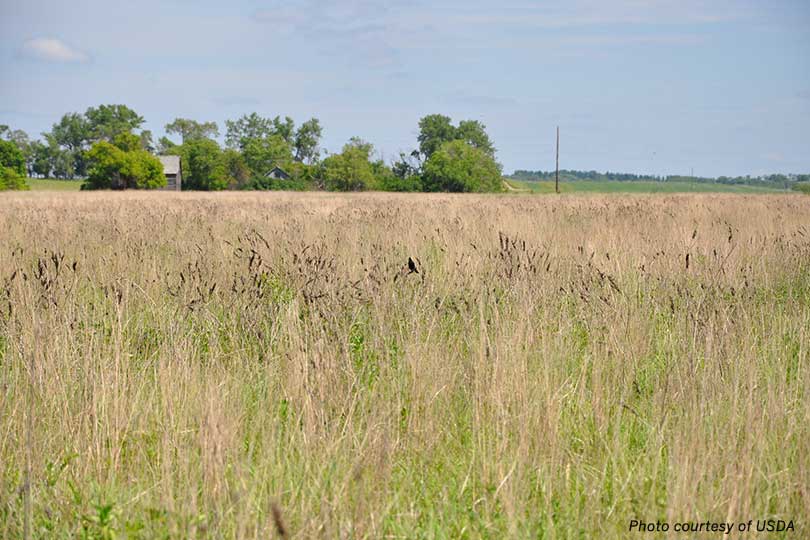More than 800,000 acres were enrolled in the Conservation Reserve Program (CRP), and U.S. Department of Agriculture (USDA) Secretary Tom Vilsack hopes Congress will allow for even higher enrollment through the next farm bill, according to Agri-Pulse.
In the CRP agreement, farmers and ranchers enter into long-term contracts with USDA to use conservation practices on their lands. These practices are aimed at improving environmental outcomes for wildlife, soil and water quality and/or climate. Farmers and ranchers receive rental payments or federal cost-share funding in exchange for employing those practices.
Since the program began, it has helped prevent erosion of 9 billion tons of soil, protected more than 170,000 stream miles with riparian and grass buffers, more than 200,000 acres of bottomland hardwood trees, nearly 300,000 acres of flood-plain wetlands and 250,000 acres each for bird and duck habitats, according to USDA.
As of March 2016, 23.8 million acres were enrolled in the program, and about 1.7 million of those acres will expire this fall.
“The challenge we’ve had is that there is greater demand for the program than Congress has allowed us to provide,” Vilsack told Agri-Pulse.
The number of acres enrolled in CRP was capped at 24 million by Congress in the 2014 Farm Bill. That was during a time of higher commodity prices and the program wasn’t as popular, Vilsack said.
Demand for CRP has increased as commodity prices have fallen and USDA raised rental rates, according to Agri-Pulse.
“The Conservation Reserve Program provides nearly $2 billion annually to land owners—dollars that make their way into local economies, supporting small business and creating jobs. When these direct benefits are taken together with the resulting economic activity, the benefits related to CRP are estimated at $3.1 billion annually,” Vilsack said. “Over the past 30 years, CRP has created major environmental improvements throughout the countryside.”
USDA received applications on 1.8 million acres for CRP general sign-up, but were only able to enroll 410,000 of those acres due to the cap. Another 330,000 acres were enrolled through continuous sign-up and more than 100,000 acres through the grasslands CRP program.
“When Congress begins to deliberate the 2018 Farm Bill, they’re going to be faced I think with a demand to rethink the cap on CRP,” Vilsack said.
To learn more about conservation programs, visit www.fsa.usda.gov/conservation or contact a local FSA county office.

